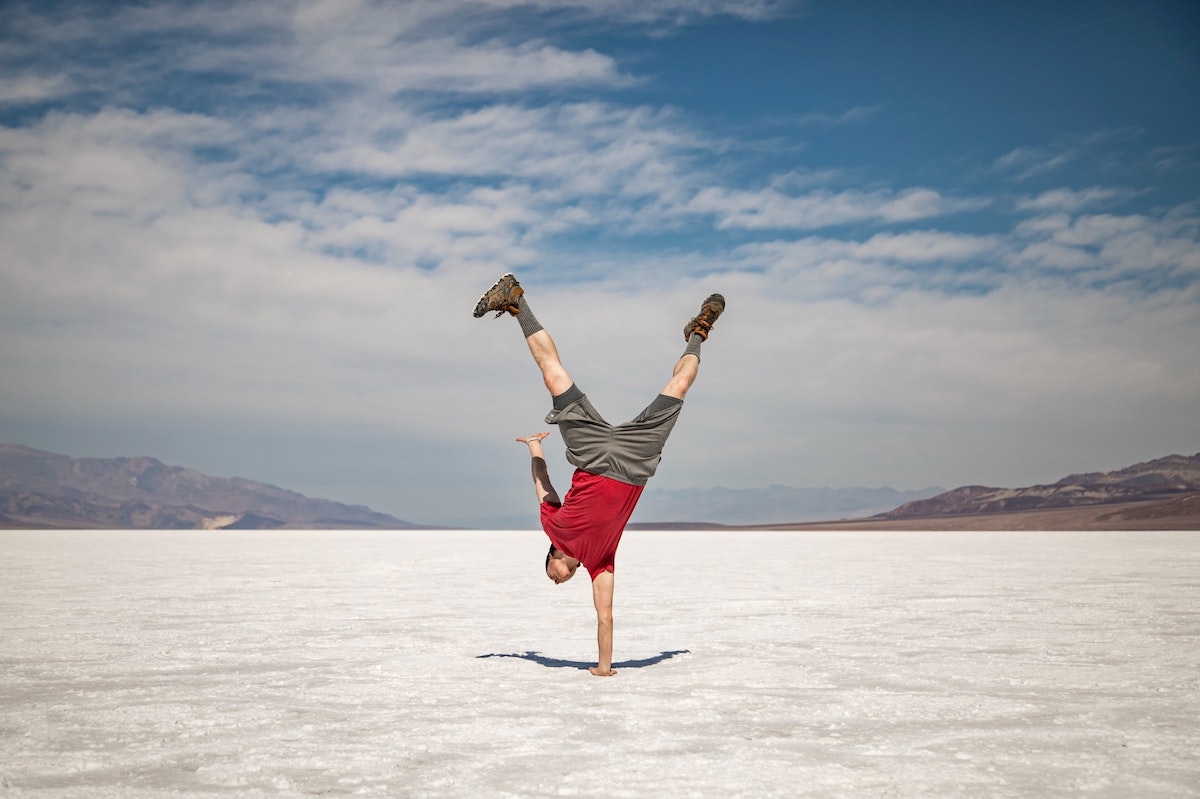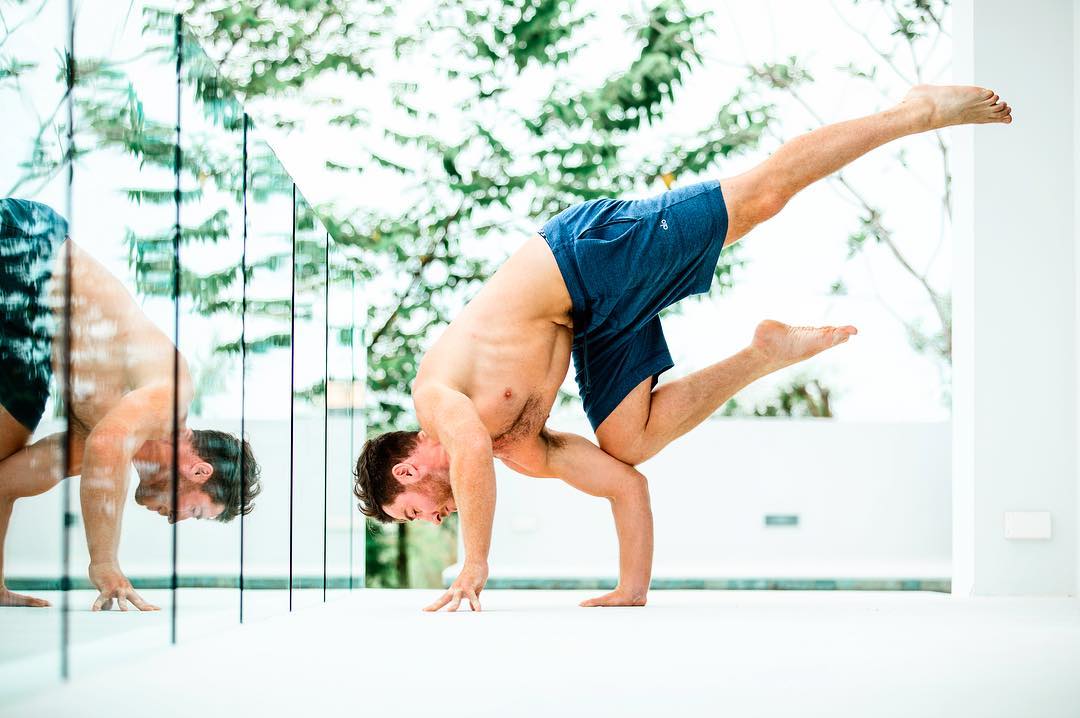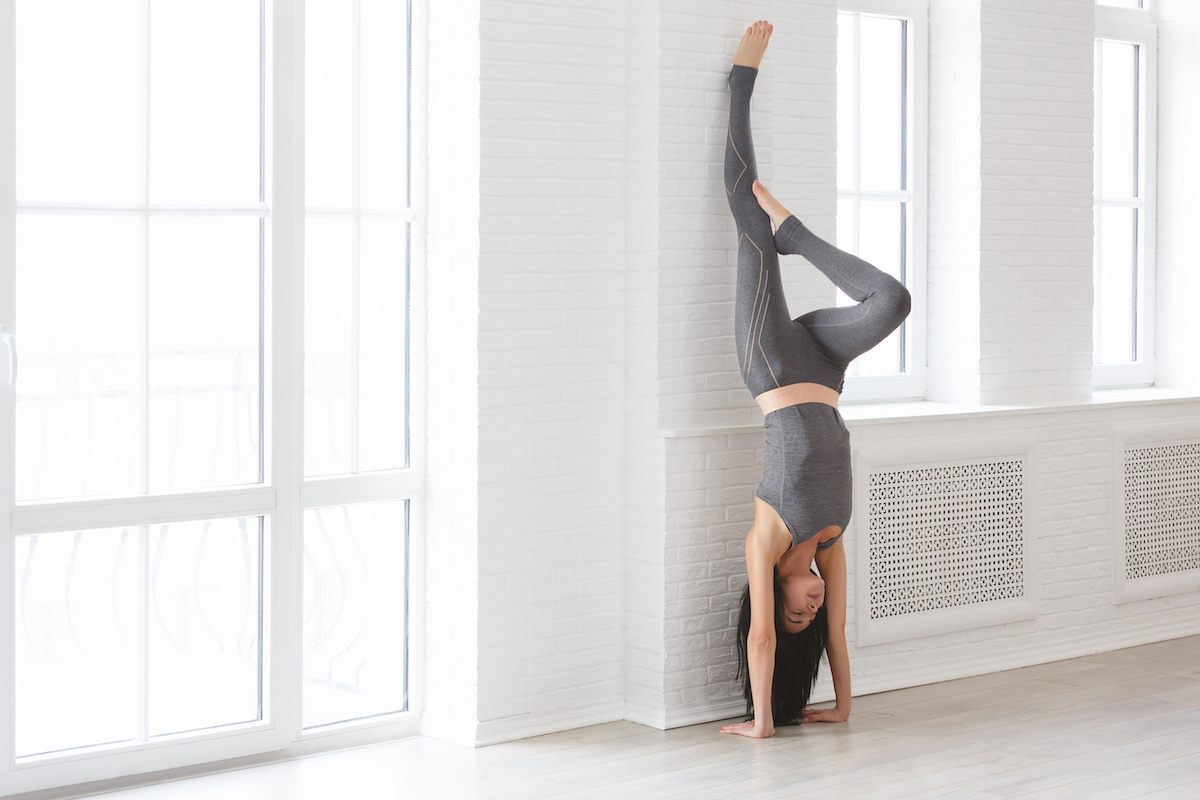How to Do a Handstand, and the Important Life Lessons You Learn While Trying

If the t-shirt handstand challenge that did the rounds on Instagram last year showed us anything it’s that: a) there are a mountain of athletic celebs populating the app, and b) we really need to learn how to do a handstand.
There are benefits besides showing off on IG stories too. Getting upside down brings fresh, oxygenated blood to your head and brain which can calm you down and lift your mood. It will also increase circulation to your upper body and relieve pressure on your feet and legs. Learning to handstand builds your upper body and core strength too, and helps hone your balance.
But ‘challenge’ is the operative word here. A handstand is no easy feat, let alone one involving all this maverick multi-tasking.
And so if you’re yet to master this acrobatic achievement (and have some time on your hands), here’s a handy guide to help you on your hand-standing way, with yoga teacher and handstand virtuoso Chris Magee. Now, ‘hands’ at the ready.
Why Is It So Hard To Do A Handstand?
Before we start, let’s first understand why you may be finding the handstand so difficult in the first place. “It is a challenging movement for several factors,” notes Magee. “It requires a lot of strength in the shoulders and core, as well as a flexibility of the shoulder in an overhead position and in the hamstrings too depending on how you choose to enter.
“The most common difficulty though is our lack of familiarity and spatial awareness when we turn everything upside down.”

There’s a great deal of fear that comes from completely letting yourself turn upside down. You will have to take that risk when kicking up from the ground, and you will fall over many times, or just bail out of the movement before you even get anywhere near. It may hurt (which is why it’s best to make earlier handstand attempts on a patch of grass or a thick carpet) but overcoming that fear of failure will be key to finally reaching your goal.
And the persistence and resilience you need to master that handstand will stand you in good stead for the rest of your life. We will all ‘figuratively’ fall over many times in life. It’s how we get up from that fall that will lead to our success – whether that be in work, love, life, or simply just being able to put a t-shirt on while your feet are above your head.
How To Prepare
So, before you enter the world of the upside-down, is there anything you can do to help prepare yourself?
“Actively working isometric holds that have a similar shape are a great way to increase your strength and flexibility whilst you are working on the shape itself,” says Magee. “Think planks, and yoga poses with your arms reaching overhead. Downward dog against a wall is also great if you are finding tightness and resistance in your shoulder position.”
Building upper body strength to hold yourself up is important, but equally important is working on your core. It is essentially this middle part of your body that is working to hold you stable as you’re in the handstand position. Abs workouts that specifically target your core then will be hugely beneficial in your quest.

How To Do A Handstand For Beginners
All these core workouts won’t mean diddly-squat if you haven’t overcome ‘the fear’ though. That feeling of letting your body turn the wrong way around can cause us to panic and fall over. But, that natural instinct to look for support on our early attempts can actually be used to your advantage according to Magee.
“Fear can be a big thing that gets in the way of people getting up in the middle of the room when they first start, so everybody tends to begin near the wall,” explains Magee. “This can be really helpful if we learn to use the wall the right way. Rather than putting your hands down facing the wall and kicking up into it to end up in an unhelpful banana shape, measure one legs distance away from the wall.
“Place your hands there, facing away from the wall. Walk one foot up to 90 degrees and push into the wall to lift your hips above your shoulders.”
Keep your hands directly under your shoulders so that your arms are vertical and you can push your weight into the floor and get a good grounding. This will help you hold your handstands for longer.
“The leg that was on the floor can then join the foot on the wall keeping the whole body at a right angle,” continues Magee, “or can reach up to the sky replicating a split leg handstand. As your awareness and strength increase, you will be able to put less and less pressure through your foot on the wall, eventually finding those moments of balance.”
Chris Magee is the co-founder of Empowered Yoga School and head of yoga at Psycle London. You can also catch Magee over on the Fiit app where he teaches a range of virtual yoga classes.


















